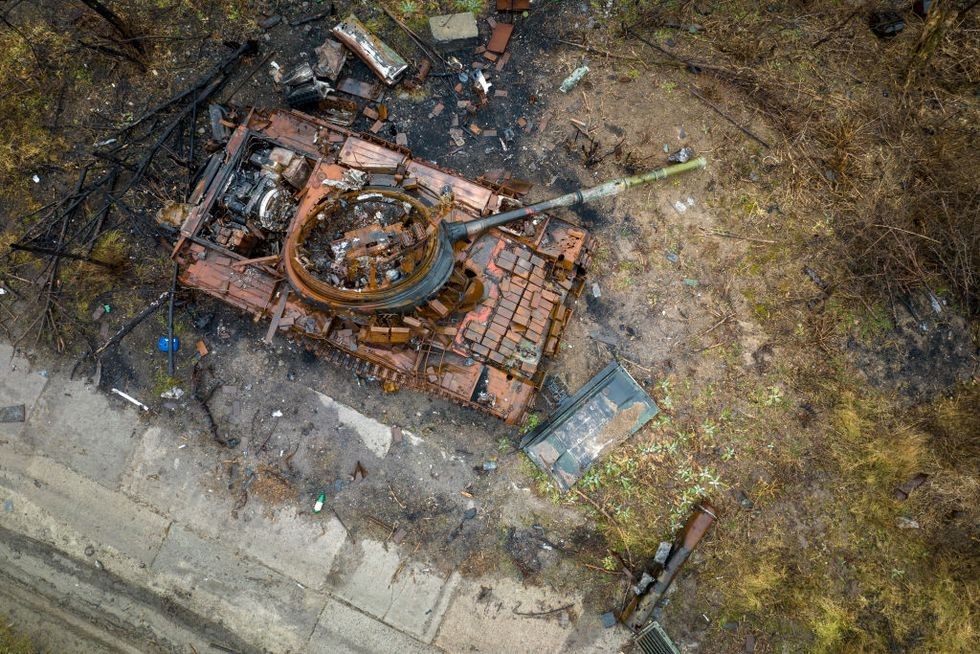 |
| A destroyed T-80 tank is found in Bogorodychne in the Donbas region during the Russia-Ukraine conflict. (Source: Getty) |
When Russia launched a special military operation in Ukraine in 2022, it actively used battle tanks at the forefront. This led to huge losses of its tanks.
However, a report in May by the Royal United Services Institute (RUSI) said Russian tanks now mainly use more cautious tactics to support infantry, while also using hidden technologies and techniques that reduce the effectiveness of US-supplied Javelin missiles.
Mr. Jack Watling and Mr. Nick Reynolds, the authors of the report, made new discoveries about Russian armor through interviews with various individuals directly involved in the conflict.
Adapt to the actual situation
The RUSI report points out that, after early losses in the campaign, Russian armor is using new tactics to minimize losses by keeping tanks in a support role, specifically providing direct fire support by tanks positioned about 1.2 miles (2km) away from the enemy, out of reach of short-range anti-tank weapons.
If within that distance, Russian tankers use optical systems to detect enemy positions and use direct fire from the main gun.
Currently, a favored Russian tactic is gunfire, effectively carried out at night by nimble 0020T-80BVM tanks equipped with superior passive thermal optics.
In such raids, a Russian tank charges forward to fire directly at an enemy position, expending all its ammunition as quickly as possible, then rolls back out of sight. Such attacks are often timed during enemy shifts to cause maximum confusion.
Russian tanks, especially older ones, are also being used as indirect fire artillery. The report notes that while this is ineffective due to its low angle of fire, the tanks are sufficiently protected to provide support in higher risk areas where artillery and ammunition supply convoys would be at serious risk of destruction, particularly from air attacks or counter-battery fire.
The RUSI report notes that even the outdated T-54 and T-62 tanks that Russia deployed to Ukraine would have a significant impact in the conflict, given their limited number of long-range anti-tank guided missiles. Anti-tank missiles are more effective in a fire support role than most infantry fighting vehicles, which have smaller, shorter-range guns.
Older, more serviceable tanks are also often used in urban conflicts, where short engagement ranges and flanking ambushes take place, reducing the advantages of modern tanks with superior optics and frontal armor.
The report notes that Russian tanks play a vital supporting role in urban conflict by suppressing urban structures and rapidly breaking through buildings to avoid penetration through choke points and paths of advance. As such, Russian tanks are being used to literally destroy new corridors through buildings, through which infantry can penetrate with less risk.
Combining technology and tactics
Over the past few weeks, there have been numerous images and videos of Russian tanks covered in strange brick-like boxes. These are explosive reactive armor (ERA), which protects the vehicle and its occupants from anti-tank weapons.
The report stressed that these “bricks” are actually highly effective against most anti-tank guided missiles, including the gun-launched Kombat missiles used by Ukrainian tanks. Multiple guided missile attacks sometimes fail to knock out Russian tanks.
Not only that, Russia is recording some success with countermeasures to defeat the US Javelin heat-seeking attack missile - the missile said to be the most expensive and powerful missile provided to Ukraine.
One of Russia's tactics is to operate around dusk and dawn when thermal imaging devices have difficulty distinguishing vehicles to significantly reduce the probability of detection, and to use coatings that reduce infrared signatures.
Additionally, changes to the engine deck on Russian tanks are effective in reducing heat, for example heat pipes have been found on some Russian tanks to redirect IR missiles.
The findings of the RUSI report appear to contradict the Western media’s heavy coverage of Russian tank destruction. But the report may also suggest that anti-tank methods not described above are responsible for the majority of the losses.
Whether Russia's adaptations can prevent tank losses from the conflict in Ukraine remains to be seen.
Source





![[Photo] Cat Ba - Green island paradise](/_next/image?url=https%3A%2F%2Fvphoto.vietnam.vn%2Fthumb%2F1200x675%2Fvietnam%2Fresource%2FIMAGE%2F2025%2F12%2F04%2F1764821844074_ndo_br_1-dcbthienduongxanh638-jpg.webp&w=3840&q=75)


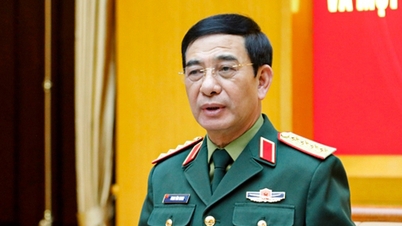


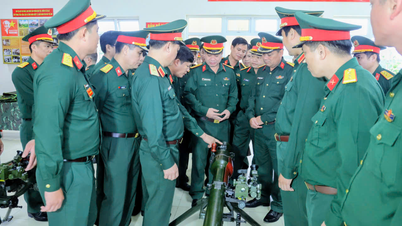

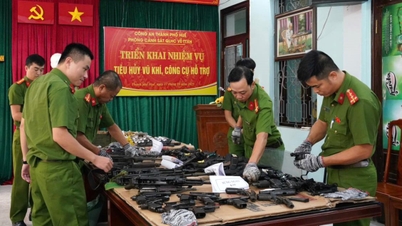



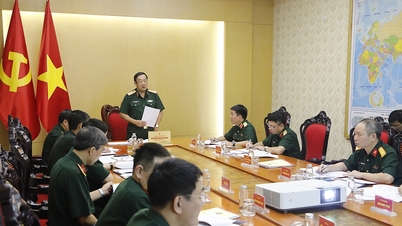









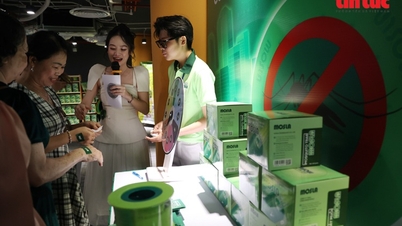










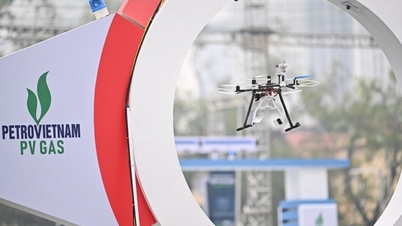




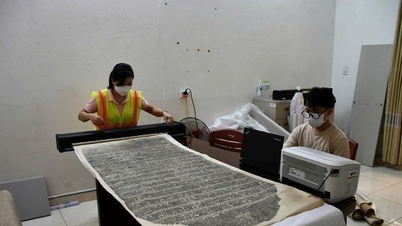





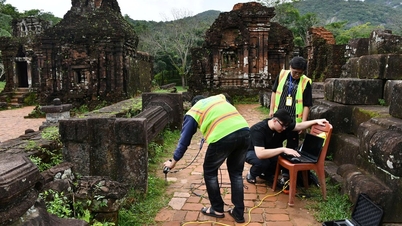






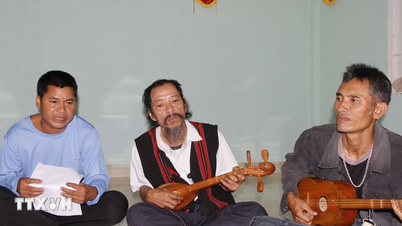




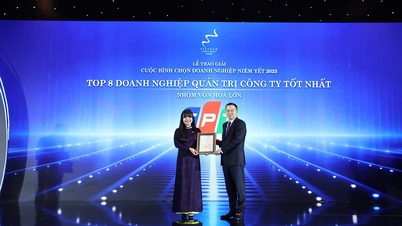



![[VIMC 40 days of lightning speed] Da Nang Port: Unity - Lightning speed - Breakthrough to the finish line](https://vphoto.vietnam.vn/thumb/402x226/vietnam/resource/IMAGE/2025/12/04/1764833540882_cdn_4-12-25.jpeg)














































Comment (0)